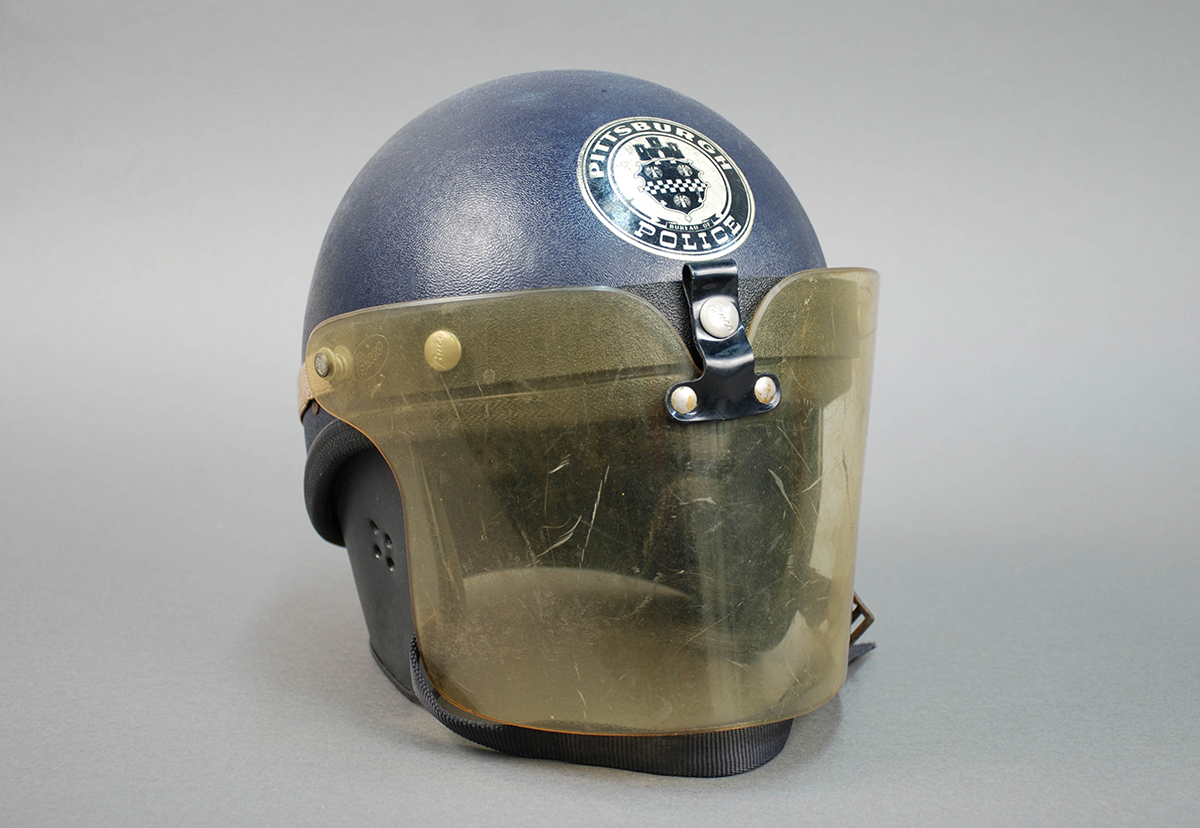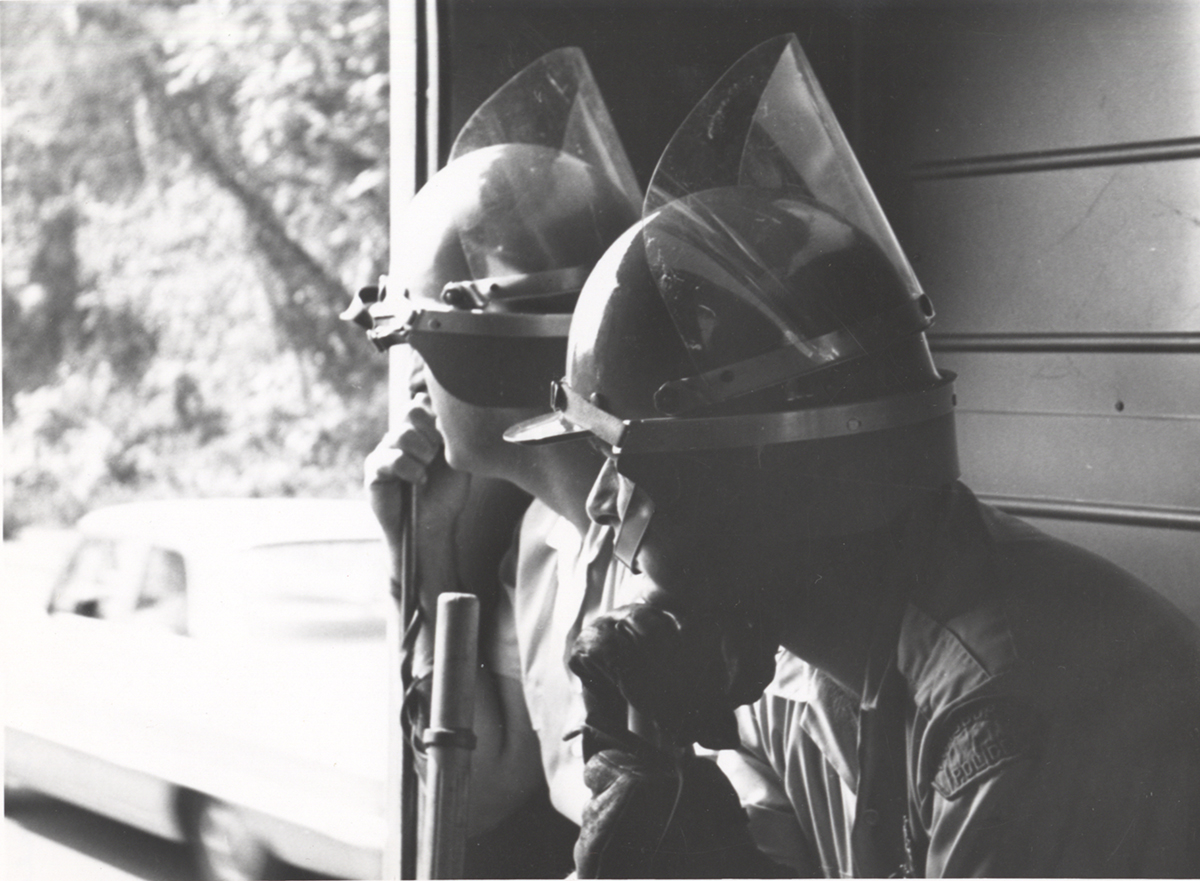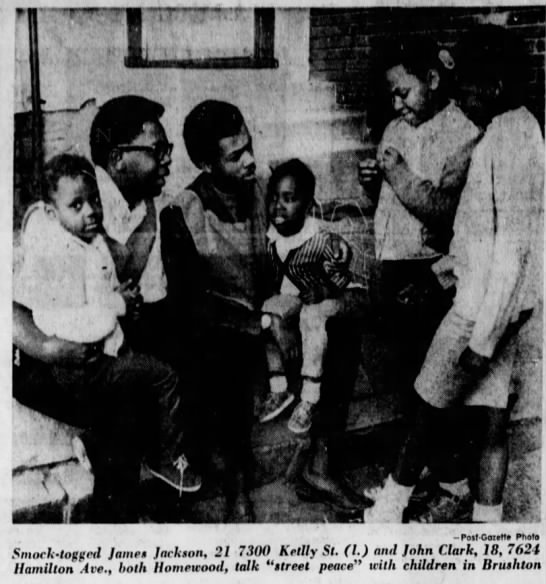The topic of police-community relations seems to be constantly in the news these days. Many of the questions that we now ask regarding the role of the police and the relationship with surrounding communities have been asked for decades. As we look back at one of the country’s most tumultuous years, we can see similar questions arise in Pittsburgh between the police and the public.
On April 7, 1968, three days after the assassination of Dr. Martin Luther King, Jr., Pittsburgh experienced its worst day of rioting. A reported 189 fires and countless cases of looting left family businesses and homes in shambles. Police responded to the disturbances outfitted in riot gear, including steel helmets, face shields, and batons. Some of this riot gear can be seen in the History Center’s Special Collections Gallery, in the fourth floor Sigo Falk Collections Center.
Historical objects such as riot helmets act as symbols that often carry controversial meanings. Riot gear may be a symbol of police protection during times of unrest. It may also symbolize feelings of anxiety from surrounding communities. The meanings we take from a particular object can differ depending on the stories we hear about that object.
Another object related to the riots in Pittsburgh that acts as a contentious symbol is a red fluorescent vest. Why would a plain garment be controversial? The stories behind the red vest helps us understand why.
On April 10, 1968, after the majority of the riots had subsided, Public Safety Director David W. Craig put 20 African American youth to work in the Hill District and Homewood with the job of walking through the neighborhoods encouraging peace. These young men wore red fluorescent vests to designate their status. Local papers called the effort “Operation Red Shirt” or the “Red Smocks.” In police reports, the group was referred to as the “Red Vests.”
The physical garments that the young men wore may have been simple, but the role the Red Vests played during the riots proved to be much more complicated. Some policemen disliked the decision to use the Red Vests. In a report written months after the riots, police stated their objections to giving young, untrained men a patrolman-like status. They noted in the report their belief that some of these young men had been involved with the unrest of the days prior.
But the Red Vests also received praise from surrounding communities. Many Hill District and Homewood residents were proud to see the young men working to “get Pittsburgh back on its feet.” People from outlying suburbs wrote to local newspapers to applaud the effort, calling the Red Vests “exactly the right strategy” and “law enforcement at its creative best.”
The Red Vests acted as patrol for a day or so. As the State of Emergency was lifted, the riots began to die down and the community looked toward rebuilding. The riots of 1968 were not the last time police responded to disturbances. The following decades would bring their own challenges, and the police bureau would update their practices and their gear to respond appropriately.
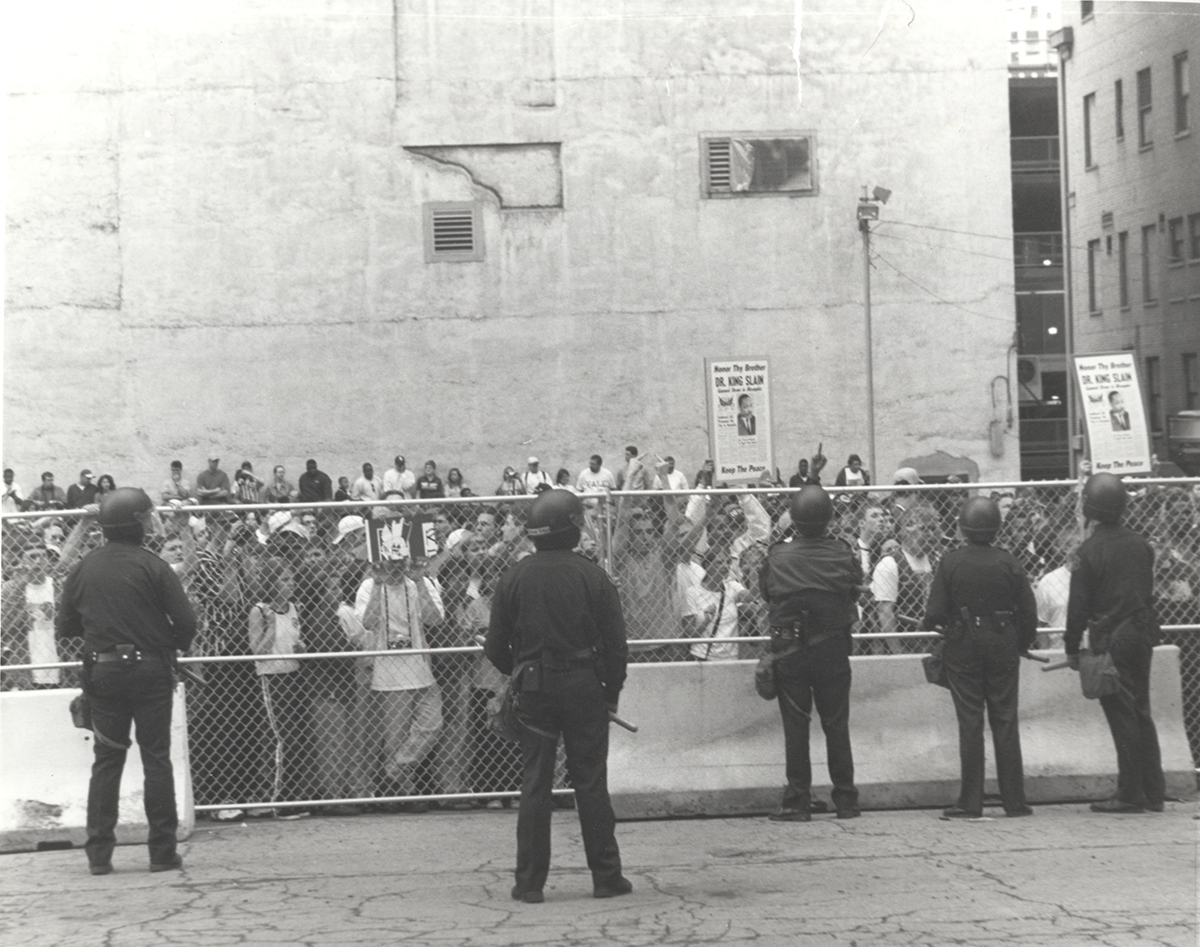
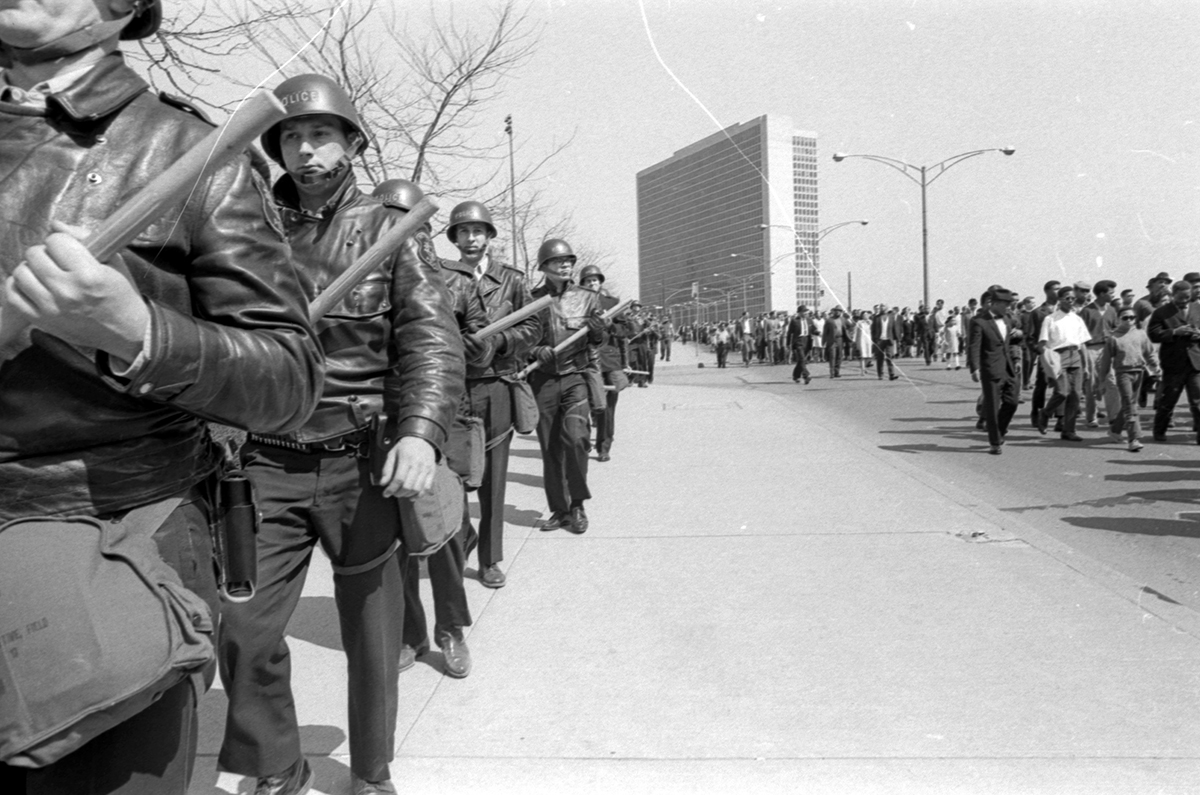
The History Center is home to more than a century’s worth of artifact and archival material documenting the Pittsburgh Police. But the collection has far fewer artifacts that tell the story of the 1968 riots from the perspective of the communities that experienced them. The addition of more materials, such as one of those red vests, would help the museum more fully tell the story. If you have any information about the red fluorescent vests or the young men who wore them, please consider sharing those stories with the History Center.
Further Reading
“Statistics of the Disorders.” Pittsburgh Post-Gazette, April 13, 1968, Saturday Edition ed.
Ryan, Jack. “‘Cool It’ Brigade Marches.” Pittsburgh Post-Gazette, April 11, 1968.
Fraternal Order of Police (U.S.), Fort Pitt Lodge 1., Riot Fact Finding Committee, report. Historic Pittsburgh Text Collection. University of Pittsburgh.
Stuart, Roger. “Vested Interest Shown in Cooling Off Tensions.” The Pittsburgh Press, April 11, 1968.
Shuck, Anna and David. “Craig Supported on Youth Patrol,” Letter to the Editor, in The Pittsburgh Press, April 17, 1968.
Stone, Donald C. “Craig Commended on Riot Policy,” Letter to the Editor, in Pittsburgh Post-Gazette, April 25, 1968.
Eleanor DePastino is an intern volunteer with the museum division at the Heinz History Center.

